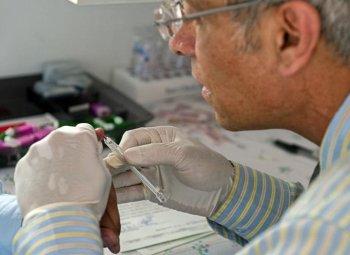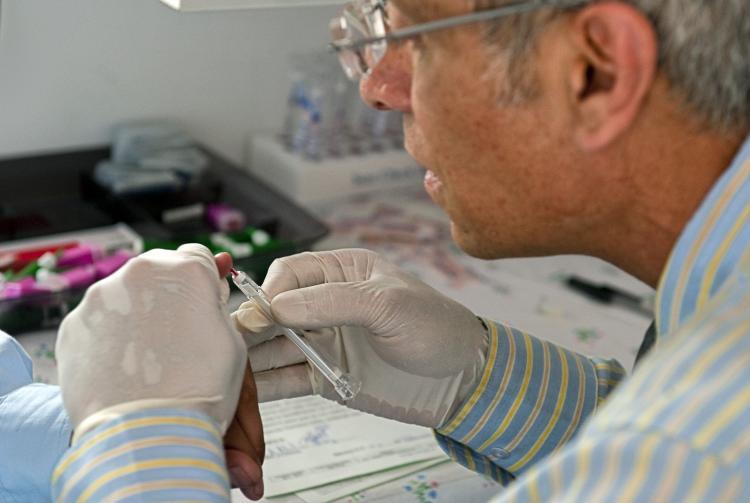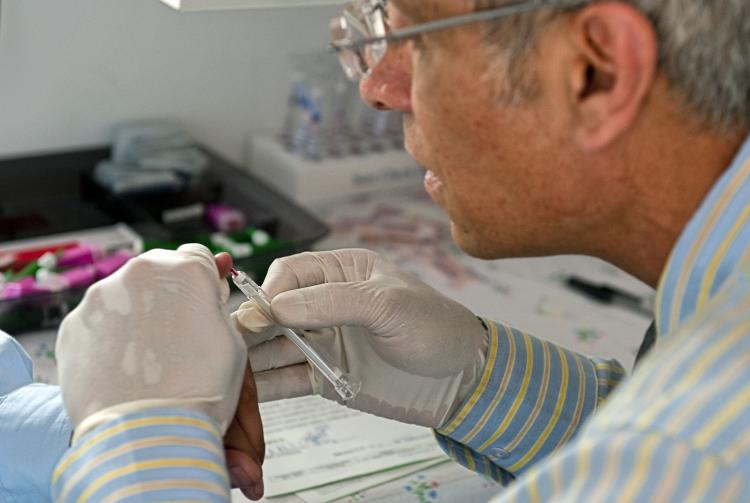New cases of HIV among those who use drugs by injection continue to decline in B.C., according to a report by the provincial health officer.
A major factor in the decline has been the expansion of Highly Active Anti-retroviral Therapy (HAART) and harm reduction programs, says the report.
Introduced in 1997, HAART is a combination of three or more drugs from at least two classes of antiretroviral drugs. It’s designed to attack HIV in various stages of its life cycle.
The latest research from the BC Centre for Excellence shows that the number of people living with HIV in B.C. who were receiving HAART increased by 547 percent from 1996 to 2009. During that same time period, new HIV diagnoses fell by 52 percent.
“HAART has been tremendously successful, extending the lives of thousands of British Columbians,” said Dr. Julio Montaner, director, BC Centre for Excellence in HIV/AIDS.
“More recently, our research has shown that the expansion of the HAART program has been a major factor in reducing HIV incidence in the province, particularly among those who use drugs by injection.”
As a result of the program’s success in B.C., other regions such as San Francisco, New York, Washington DC, and China are moving towards similar methods of HIV treatment and prevention.
“The recent decline in new HIV cases is encouraging, especially since a significant decrease has been seen amongst vulnerable populations like those who use injectable drugs. This decrease is more proof that Highly Active Anti-retroviral Therapy and other harm reduction services are working and should be expanded,” said BC provincial health officer Dr. Perry Kendall.
The decrease of new positive HIV tests was found in all ethnic groups and in both males and females around the province in all health authorities. The most apparent increase was among those between the ages of 20-39.
Nationwide however, the overall number of people living with HIV (including AIDS) continues to rise, from an estimated 57,000 in 2005 to about 65,000 by the end of 2009 (a 14 percent increase), according to the Public Health Agency of Canada.
Although estimates of the number of new HIV infections are uncertain, it appears that the number of new infections in 2009 (between approximately 2,300 and 4,300) was about the same as or slightly greater than the estimated range in 2005 (2,200 to 4,200).
A major factor in the decline has been the expansion of Highly Active Anti-retroviral Therapy (HAART) and harm reduction programs, says the report.
Introduced in 1997, HAART is a combination of three or more drugs from at least two classes of antiretroviral drugs. It’s designed to attack HIV in various stages of its life cycle.
The latest research from the BC Centre for Excellence shows that the number of people living with HIV in B.C. who were receiving HAART increased by 547 percent from 1996 to 2009. During that same time period, new HIV diagnoses fell by 52 percent.
“HAART has been tremendously successful, extending the lives of thousands of British Columbians,” said Dr. Julio Montaner, director, BC Centre for Excellence in HIV/AIDS.
“More recently, our research has shown that the expansion of the HAART program has been a major factor in reducing HIV incidence in the province, particularly among those who use drugs by injection.”
As a result of the program’s success in B.C., other regions such as San Francisco, New York, Washington DC, and China are moving towards similar methods of HIV treatment and prevention.
“The recent decline in new HIV cases is encouraging, especially since a significant decrease has been seen amongst vulnerable populations like those who use injectable drugs. This decrease is more proof that Highly Active Anti-retroviral Therapy and other harm reduction services are working and should be expanded,” said BC provincial health officer Dr. Perry Kendall.
The decrease of new positive HIV tests was found in all ethnic groups and in both males and females around the province in all health authorities. The most apparent increase was among those between the ages of 20-39.
Nationwide however, the overall number of people living with HIV (including AIDS) continues to rise, from an estimated 57,000 in 2005 to about 65,000 by the end of 2009 (a 14 percent increase), according to the Public Health Agency of Canada.
Although estimates of the number of new HIV infections are uncertain, it appears that the number of new infections in 2009 (between approximately 2,300 and 4,300) was about the same as or slightly greater than the estimated range in 2005 (2,200 to 4,200).



Friends Read Free